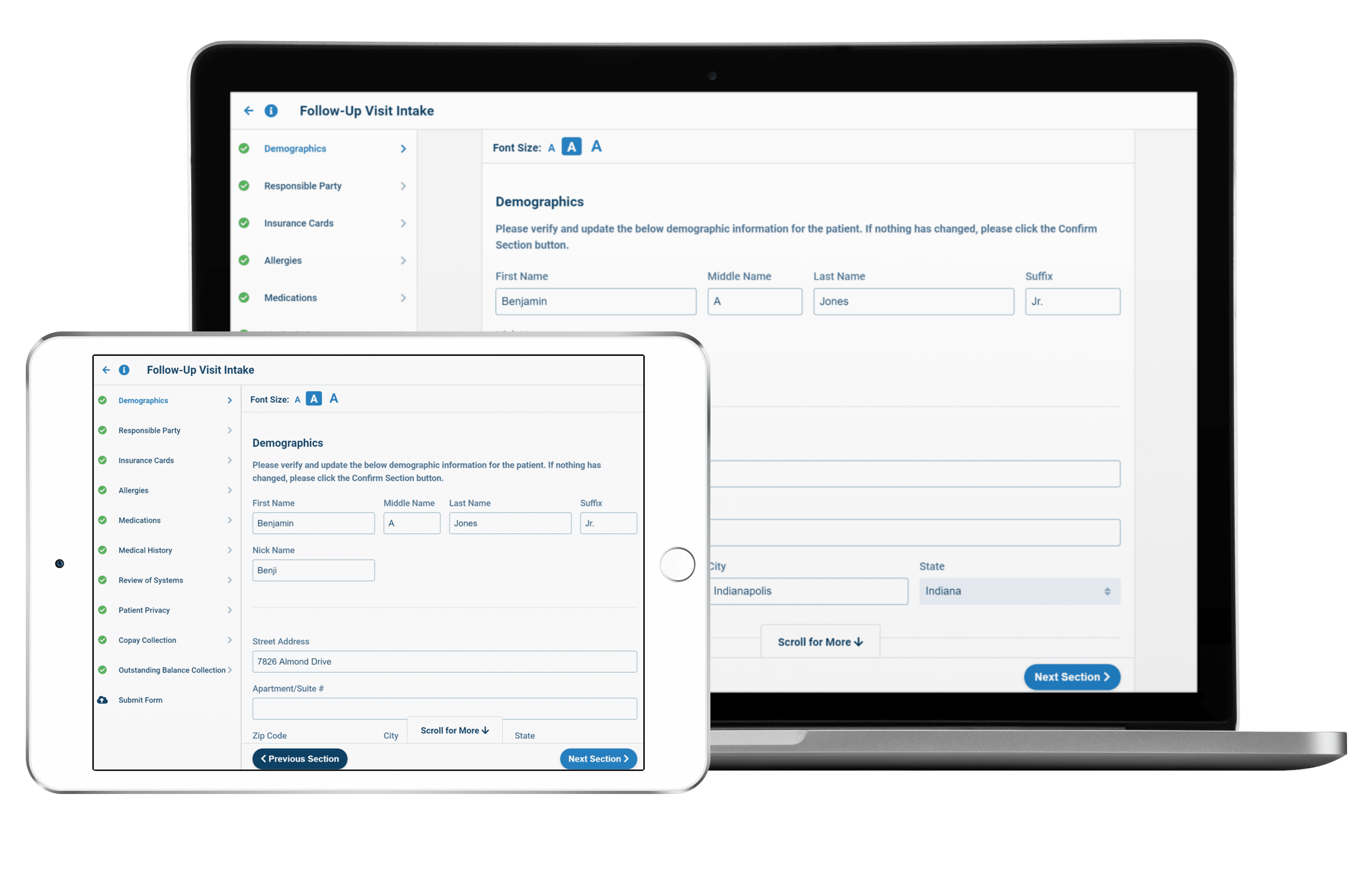
Smarter Choices for Practice Efficiency
A recent industry study of more than 1,000 healthcare providers showed that running a p...
February 18, 2021
A digital intake form may be just what your practice needs to streamline the intake process and cut costs. Nearly everything is digital in 2021. More patients than ever expect digital interaction and tools from their providers, and that trend will only continue to grow. The traditional intake process is notoriously frustrating and problematic. Manual data entry can result in inaccuracies in the patient’s chart, consuming a wealth of your staff’s time and possibly leading to issues in clinical decision-making down the line. Patients also spend longer in waiting-rooms completing their forms, which can contribute to crowding. With a digital intake form, providers can streamline the intake process, improve the accuracy of patient charts, cut costs, and protect their patient’s privacy.
A digital intake form is an online document that a patient completes before an office visit with their physician. This form is a way for the practice to collect patient history, concerns, symptoms, and insurance information. Traditionally, this information has been collected via paper documents once the patient was in the office, and the data manually entered by a front-line staff member.
By taking a manual process and automating it, providers save time. The digital intake form automates the check-in process and streamlines productivity. In the past, patients would have to fill out their forms in person, and the front-line staff would transcribe the data into the patient’s chart. This process took up a great deal of time and effort, which they could spend on more critical patient tasks. The digital intake form eliminates transcription, uploading data directly into the patient’s chart and freeing front-line staff to focus elsewhere.
The transcription process is riddled with human error and therefore is not the best method for documenting patient health information. Whether caused by poor patient handwriting that was difficult to decipher or typing errors on behalf of the staff, errors were a consistent problem in the traditional intake process. A digital intake form offers a more accurate alternative. Patient handwriting is no longer a factor because everything is now typed or clicked. Patients can also take their time filling out the form before they come into the office, increasing its accuracy and depth. The digital intake form directly populates the client’s chart upon submission, eliminating the transcription step entirely from the process.
Implementing digital solutions is a great way to cut costs on things like materials, staffing costs, and more. The digital intake form helps providers cut costs associated with traditional paperwork, including paper, clipboards, pens, printing supplies, printer maintenance, and even staffing. With transcription removed from your front-line staff’s duties, there is a chance you might not need as many people in the front office.
There is a waning perception that paper documents are more secure than a digital intake form, but that is not the case. Paper documents leave providers vulnerable to a wealth of privacy risks. If a paper document were to get lost, fall into the wrong hands, or be viewed by the wrong person, your practice would be in violation of HIPAA privacy laws. Digital intake forms ensure that only authorized personnel can access patient data. If a patient leaves their screen unattended when completing the form, it will time out. If a provider forgets to log out of their chart, the system will log them out automatically. This is much more secure than a paper document, which could be left on the printer or in an unlocked file cabinet.
To learn more about a secure, efficient, and accurate digital intake form, click here.